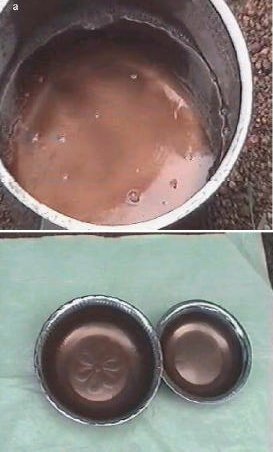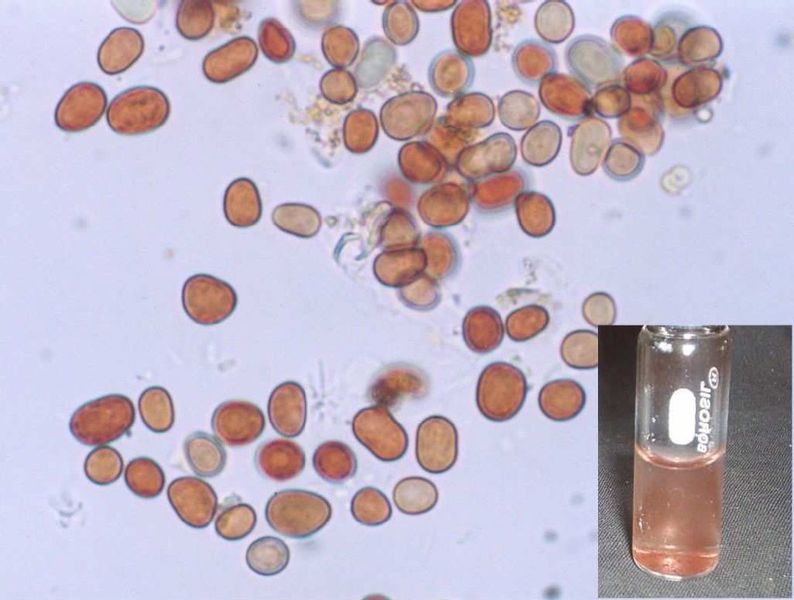|
Panspermia Proven? Between July and September of 2001, a phenomenon occurred in India that, to this day, has not been positively explained. The ‘Red Rain of Kerala’ has become one of the most discussed anomalies of recent years and, for some, its occurrence proves that we are not alone in the universe. The red rain first fell on the Kottayam and Idukki districts of Kerala on July 25th, 2001 and the downpours were most intense during the first ten days, growing less frequent over the following eight weeks. Locals were baffled by the red staining they found on their clothes and linen and buckets, pails and bowls collected more of the coloured water. Some other hues were reported, but the scarlet tint was most prevalent. Strangely, the red rain fell in very localised areas, with normal rain falling only a few metres from where the coloured water was collected.
According to early eyewitnesses, the first red rain was preceded by a thunderclap and a bright flash in the sky. This led some to conclude that the staining was caused by dust from a high altitude meteorite burst over the region. As the phenomenon diminished, Kerala’s red rain became just another mystery to file away. Indeed, a report from the Centre for Earth Science Studies (CESS) and the Tropical Botanical Garden and Research Institute (TBGRI) in Kerala concluded that the cause of the red rain were algal spores from local trees. The report determined that there was no volcanic, desert or meteoric dust in the rain and that no pollutants or gases had caused the odd colouring. What was not explained was why the rain fell in such localised areas, nor why the cells that were analysed contained high concentrations of aluminium and low amounts of phosphorous. Aluminium is not usually found in biological cells and phosphorous is normally found in much higher quantities. The mystery really exploded onto the world scene in April, 2006, when Dr Godfrey Louis and his research student, A. Santhosh Kumar, published a report in the Astrophysics and Space Science journal, suggesting that the red particles were microbial, extra-terrestrial organisms. They proposed that a meteorite exploded high over Kerala, releasing in excess of 50,000kg of the alien microbes over the region. Slowly, the alien cells drifted down over the following two months, explaining the high concentrations at the beginning of the incident that diminished over time. Unfortunately, however, no meteoric or cometary dust has been foundin the samples taken from Kerala.
Tests on the cells by Louis’ team found that no DNA could be found, something unheard of in terrestrial biological organisms. Recent studies by Professor Chandra Wickramasinghe of Cardiff University have yielded positive results for DNA in the cells, but the mystery does not stop there. Experiments in the laboratory have shown that the cells can reproduce in water heated to nearly 600˚F (300˚C). All known earthly microbes are killed when heated to only 250˚F (130˚C). So what do we have here? Are the cells found in the Kerala red rain terrestrial spores of a previously unknown type, that sometimes defy attempts to locate DNA in its structure, that can reproduce at temperatures that would kill any known microbe or bacteria, that contain high concentrations of aluminium and low levels of phosphorous (in direct oppositions to all earth-based life). Are the cells really only hardy algae spores that are common in Kerala, as the first official report suggested? Or is what fell on that Indian province five years ago the first definite proof that life exists in the depths of space and sometimes finds its way to Earth? It seems that the scientific community is divided on this one… Picture Credits: Wikipedia © Steve Johnson - 2006 (First published in Issue 4 of UFOData Magazine.) |

